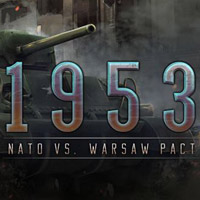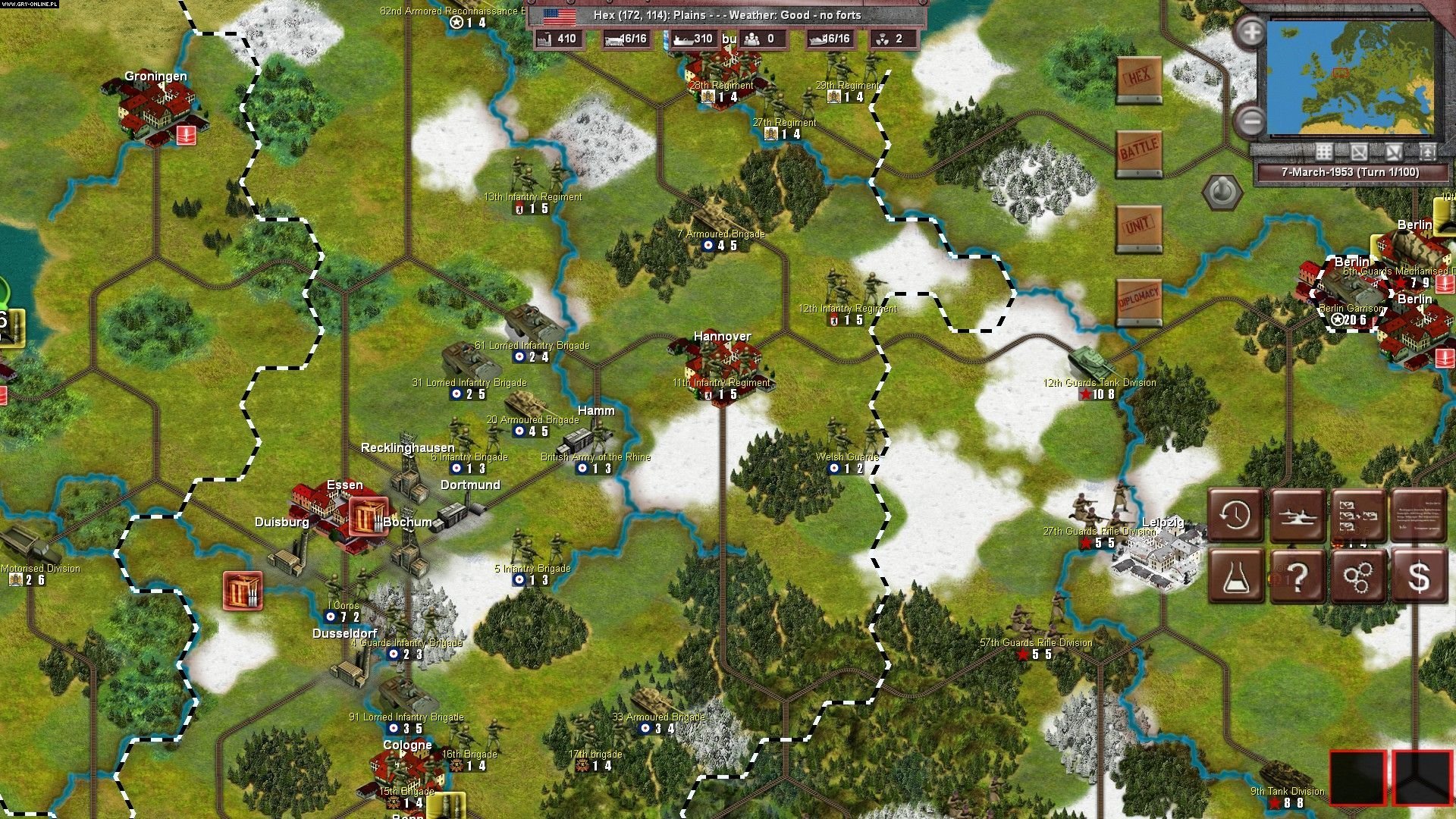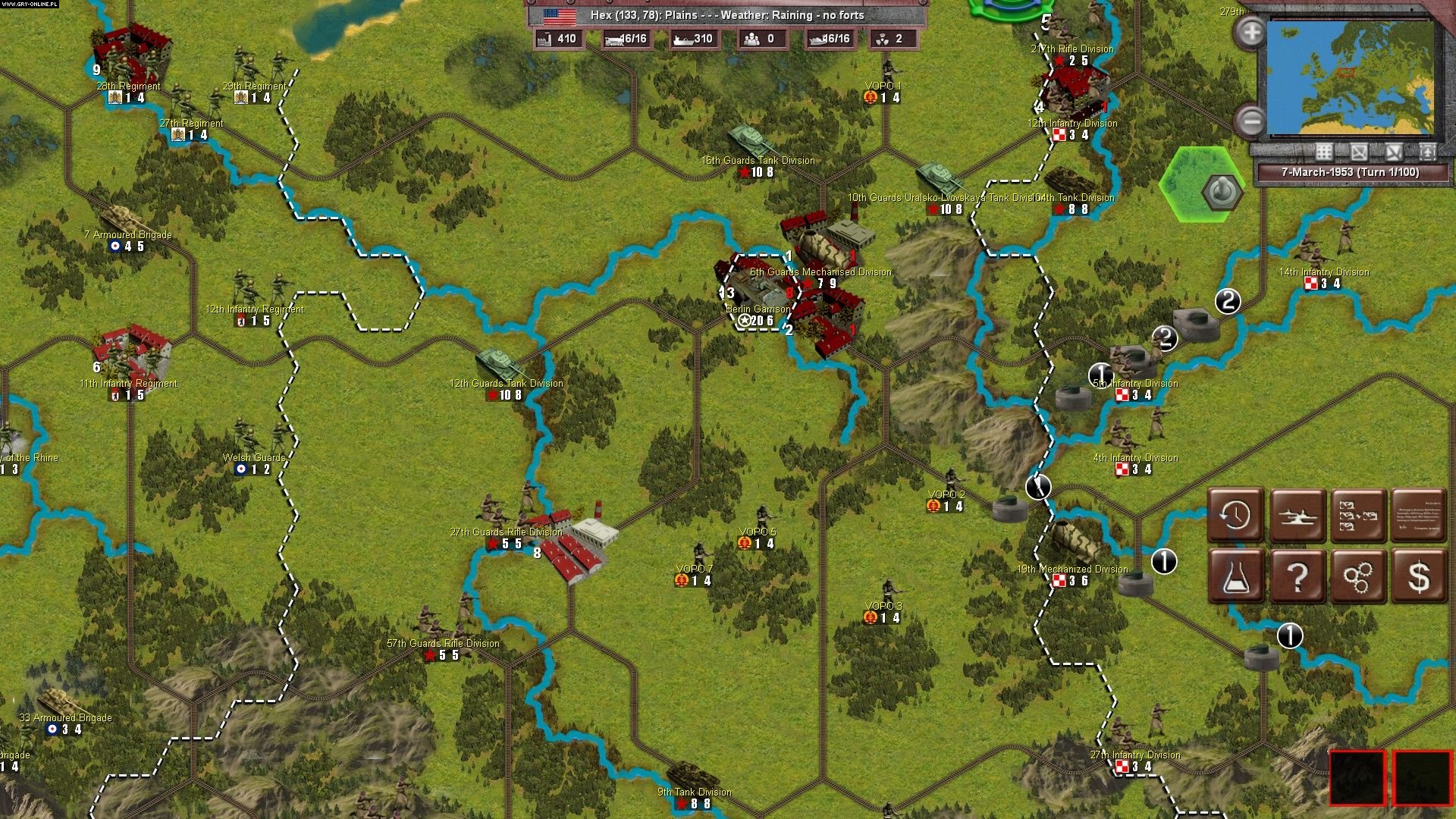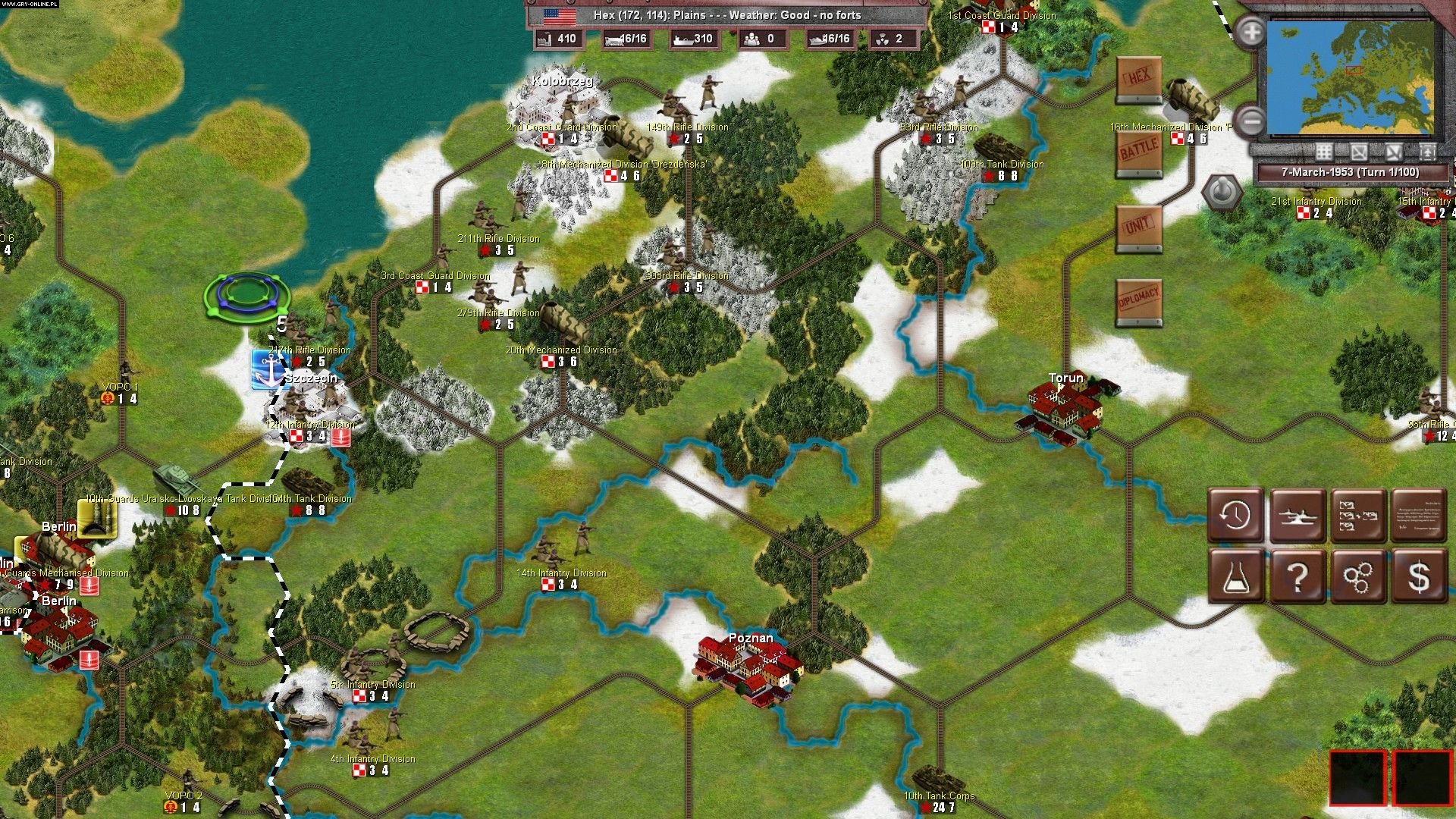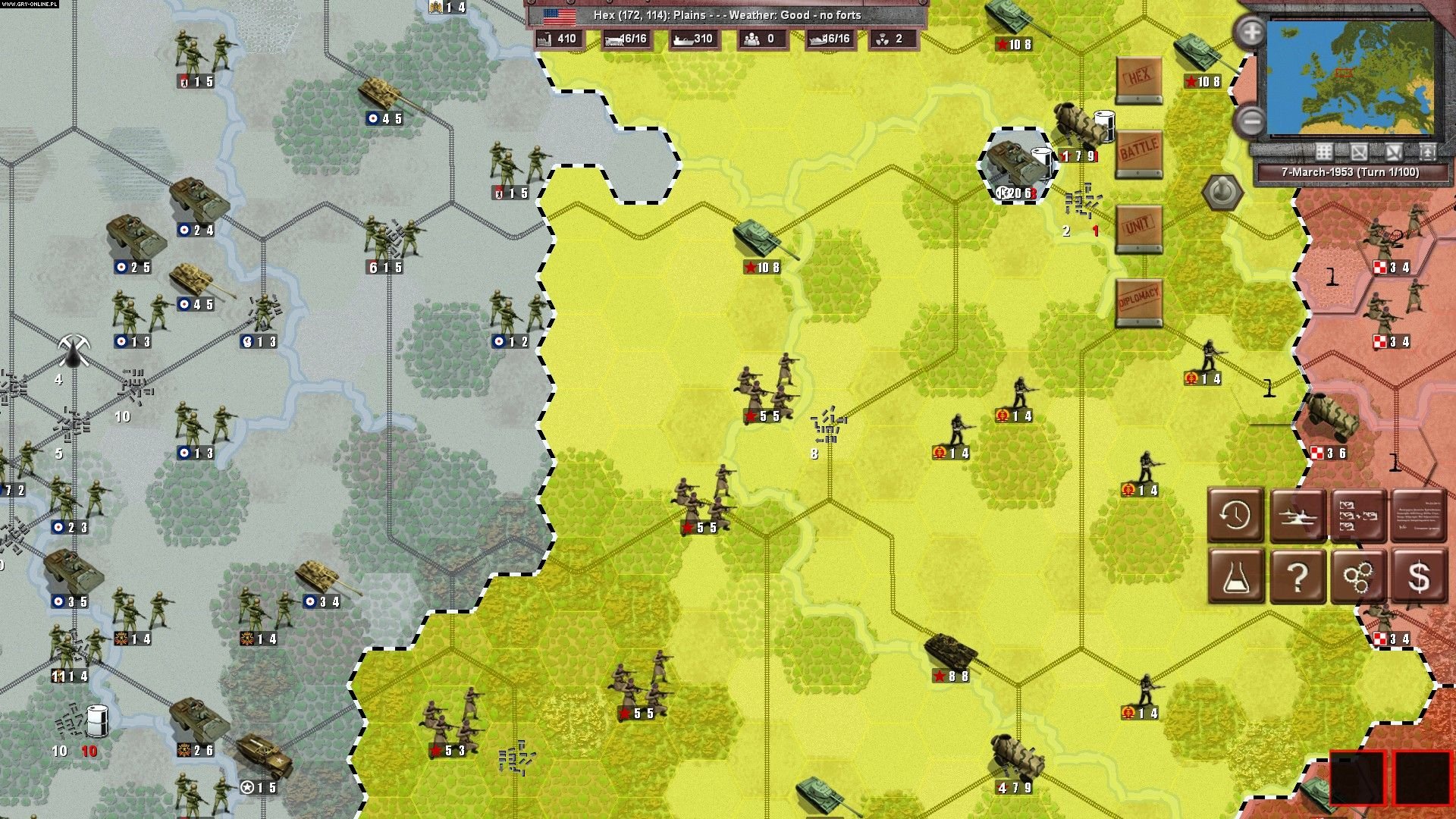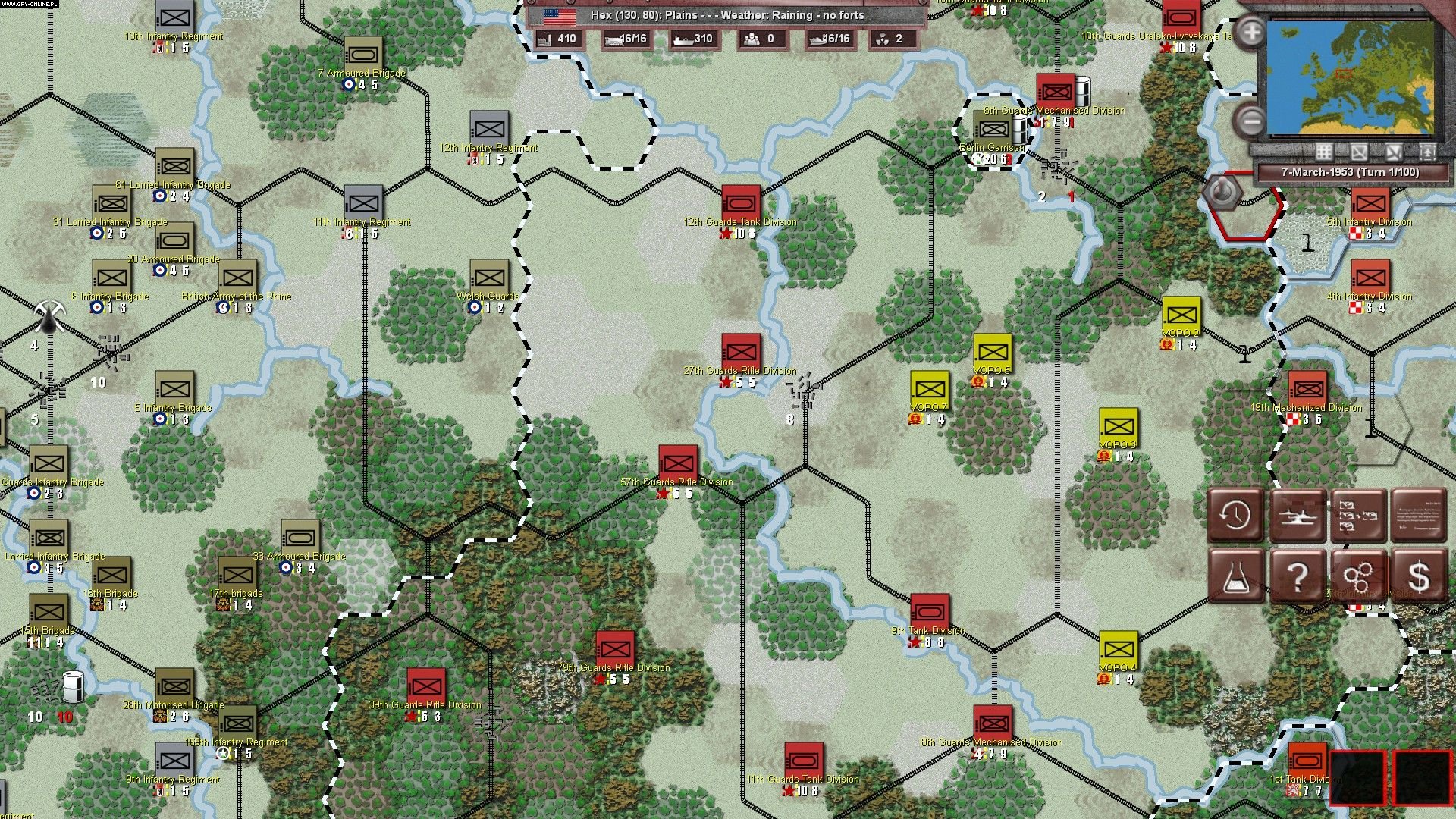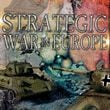1953: NATO vs. Warsaw Pact is a classic turn-based strategy game about a fictitious conflict between the NATO community and the Warsaw Pact countries, set in the 1950s. The title was developed by Wastelands Interactive, a native development studio with such successful productions as Strategic War in Europe or Storm over the Pacific.
The game takes us into the realities of a conflict that did not take place, but in the era of the Cold War and growing tensions between East and West, it could really have happened. The action begins in the title year 1953, just after the death of Joseph Stalin. It was then that the warring factions of Russian politicians and magnates took advantage of the period of destabilisation in the superpower, sparking the longed-for war against the "broken West". As each side had at that time a large arsenal of nuclear weapons, the situation could end with the outbreak of the Third World War and the end of the world as we know it. Luckily, the fate of the conflict has been entrusted to the players this time, and only on them will depend the final of this global skirmish.
The action takes place on the European continent, covered with a network of more than 40,000 hexagonal fields. Numerous armies (consisting of hundreds of land, air and sea units), which clash in subsequent campaign battles, were placed under the control of the players. The authors described in detail the military and political potential of individual countries in the period shown in the game, as well as a number of actual historical events from that time, which could have had an impact on the fate of the conflict. The course of warfare may be influenced by a number of typical factors, such as the fog of war, dynamically changing weather, and the need to repair and supply the fighting units. In addition to the clashes themselves, however, we must also deal with diplomacy and the development of technology on five different levels, equipping ordinary ships from the beginning with modern types of weaponry. It is also possible to invest in an atomic bomb, which can determine the fate of war.
In 1953, several interesting solutions were used to make gameplay more attractive. First of all, while playing, we can control not only the whole coalition, but also a single country or a group of countries (out of a total of 30 playable nations). So instead of commanding a powerful British army, we can lead a mini-coalition, made up of Romania, Hungary and Bulgaria, for example. Although the game is designed to play alone, the authors have implemented an interesting mode of competition with ourselves, in which we can direct the actions of two rival parties.
Please let us know if you have any comments or suggestions regarding this description.
